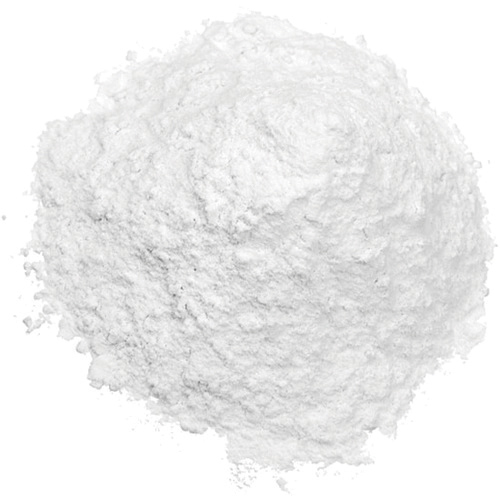August 2021
| PIETMAN BOTHA, INDEPENDENT AGRI- CULTURAL CONSULTANT |
 |
Maize production is the function of several factors like climate, fertilisation, acidity and cultivation. Acidity is determined from the soil sample information and seen in soil profile studies. Maize production is limited by soil acidity only when toxic levels of elements such as aluminium (AL) and manganese (MN) are present and not necessarily a low pH.
Aluminium toxicity is predominantly associated with soil acidity, while manganese toxicity is rarely associated with soil acidity, although both forms of toxicity can sometimes occur simultaneously. The danger of Al toxicity in maize only exists when the pH (KCl) is less than 4,5 or the pH (H2O) is less than 5,5. Al toxicity is determined by the ratio of Al and hydrogen (H) to the total of potassium (K), calcium (Ca), magnesium (Mg) ions. This ratio expressed as a percentage, is known as acid saturation.
Yield losses will increase as acid saturation increases above 20%, since water and nutrient uptake are then impaired. No grain yield is expected at 80% acid saturation. Under conditions where both Al and Mn toxicity occur, Mn toxicity will be sufficiently neutralised if soils are managed below 20% acid saturation.

Lime is used to correct the pH and acid saturation levels. Lime requirement is aimed at reaching acid saturation levels of between 0 and 15% in order to provide a buffer against re-acidification and Al toxicity. The managing of acid saturation below 15%, should however be thoroughly considered. To use more lime application than what is necessary to lower acid saturation to 0% is for instance a costly process.
It is however important to determine up to what depth soil acidity prevails in the soil and to what depth it should be neutralised before the lime and gypsum rate is calculated.
QUALITY OF LIME
Lime quality includes aspects like:
Soil acidity neutralisation under field conditions is not influenced by these individual values, but only through multidimensional, mathematical equations including all aspect. However, liming materials with the highest CCE (HCl), CCE (Rh), the largest portion of fine particles and the highest pH (KCl) should be the best to neutralise soil acidity under field conditions. Evaluate your lime in terms of these factors as well as the cost delivered to your farm.
TYPE OF LIME
Dolomitic and calcitic lime are available in the market. The Mg status of the soil will determine which one is needed. Dolomitic lime is recommended in favour of calcitic lime when the Mg status of the soil is low (<40 mg kg-1) or relatively low in comparison with the Ca status, unless the Mg requirement can be met by the use of Mg containing fertilisers.
LIME REQUIREMENT AND APPLICATION
Precision farming is the way to go in future and is also the best way to apply lime. This can only be done if precision sampling is done and the lime can be precision applied. It is more costly, but the return on the investment is worthwhile. In a field both dolomitic and calcitic lime can be recommended and applied with precision liming. Most of the lime and gypsum sources are listed in the Grain SA Grain Guide (find it on the sagrainmag.co.za website). In the ARC-Grain Crop Maize Information Guide lime recommendations according to required change in acid saturation, the cation exchange capacity of the soil and quality of some lime sources can be found.
The price of lime, transport costs, soil incorporation costs and moisture content of the lime should also be taken into consideration. Act No. 36 of 1947 determines that 100% of the particles of a standard lime should be <1 700 µm and 50% <250 µm. In case of microfine lime, 95% of particles should be <250 µm and 80% <106 µm. The minimum allowable calcium carbonate equivalent (CCE [KCl]) for both limes is 70%. Compare the technical information of the different lime sources and make a financial decision.
A well calibrated lime spreader is needed to apply the lime. If the lime is applied at a variable rate with precision implement the necessary maps and data is also needed. Apart from quality, lime reaction in the soil is highly dependent on mixing the lime thoroughly with the soil. This is achieved by first disking, followed by ploughing or deep ripping. If it is possible lime should be applied and worked in at least two months prior to planting to ensure that lime reaction is complete at planting.
Strip liming can also be done if strip acidification has been identified by soil sampling. It is important that the lime is applied on the right strips. If the controlled traffic practices with fixed tracks is applied it can be an alternative. Lime should be applied at least two months prior to planting in a strip of 300 mm over the row and incorporated into the soil.
SUBSOIL ACIDITY
Subsoil acidity is a growing problem and lime also helps for it as long as it reaches the subsoil. The using of implements that deposit lime deeply – that is specially adapted rippers or deep ploughing – is effective but costly. A surface application of gypsum can be used, but discuss this with your lime representatives. Gypsum replaces Mg from the top to the subsoil and dolomitic lime should therefore be applied with gypsum to restore the topsoil Mg. Gypsum will need one or two seasons before it reaches the subsoil and therefore, deep incorporation of lime is often a quicker solution.
IMPACT OF LIMING ON HERBICIDE IN SOIL
It is important to understand that lime will have an effect on herbicide in the soil. Some herbicide will become available and can damage the crops. It is important to discuss the liming process with the seed and fertiliser representatives. Crops like sunflower, dry or soya beans can be affected negatively with the replacement of herbicide molecules by lime.
For more information, the ARC-Grain Crops Maize Information Guide, the Grain SA Grain Guide and the FERTASA Fertiliser Handbook can be consulted. The fertiliser representatives in your area an also help with information.
Publication: August 2021
Section: Pula/Imvula